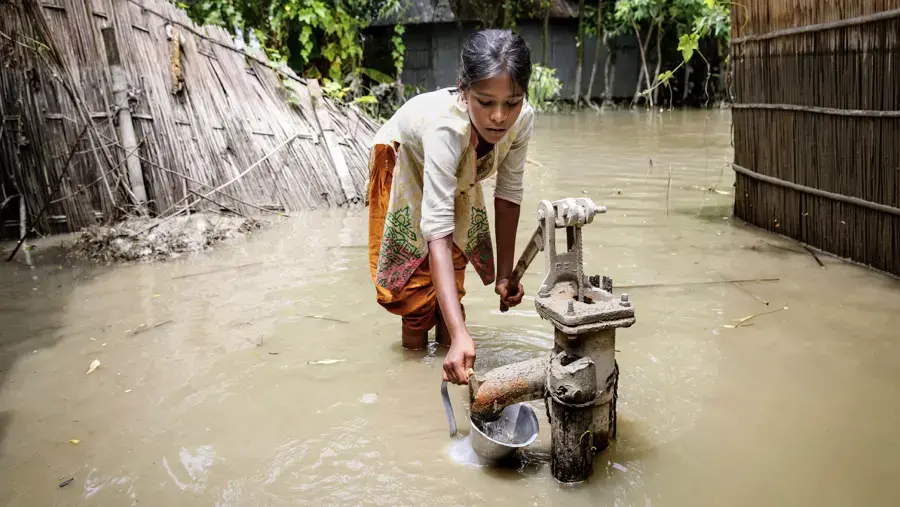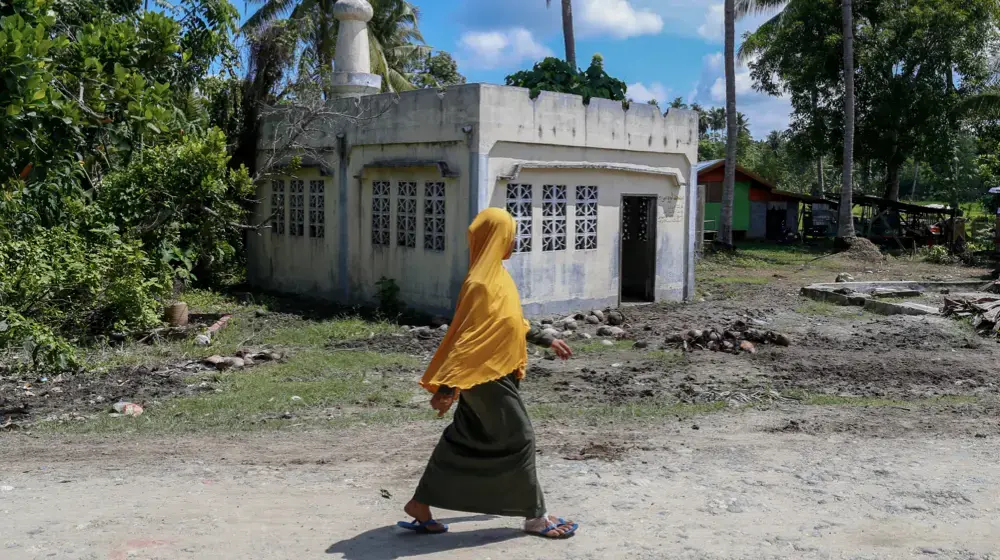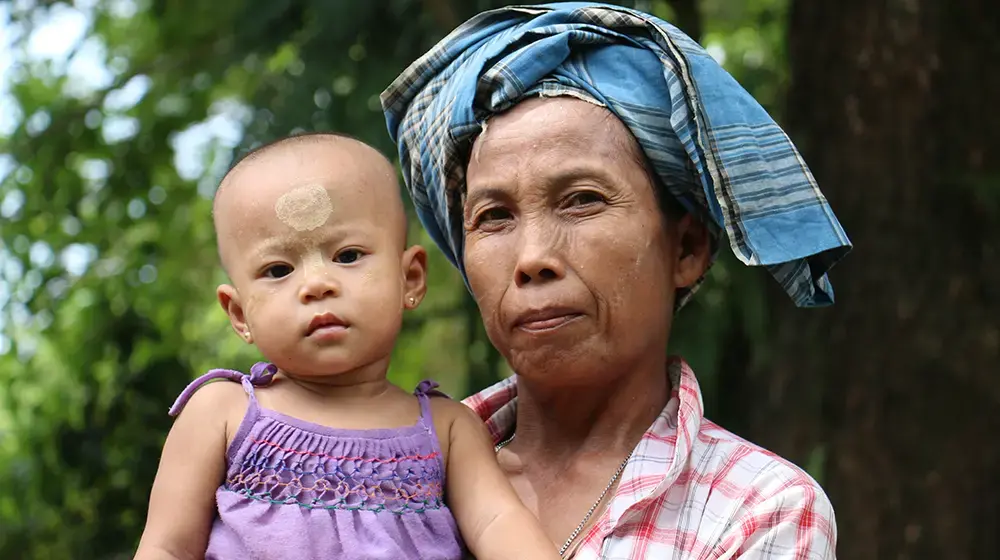Humanitarians & the climate crisis
Humanitarians & the climate crisis
As the climate crisis intensifies, the impacts on women, girls and the most vulnerable are increasingly cause for alarm.
Climate-related disasters are eroding the hard-fought progress on health and gender equality and stretching already under-funded health services in developing countries. The climate crisis affects the social and environmental determinants of health – safe and clean water, clean air, sanitation and sufficient food. Without these essentials, achieving sexual and reproductive health and rights becomes impossible.
As we brace for cycles of disaster and displacement, we can anticipate an increase in poverty along with spikes in gender-based violence and harmful practices like child-marriage.
To meet the multiple challenges of this crisis, UNFPA plays a critical role in emergency responses through the United Nations cluster system. By ensuring access to basic services in disasters, humanitarian workers are supporting the most vulnerable and protecting human rights. This collection of stories and portraits celebrates some of the humanitarian workers coping with the impacts of climate change in the world's most disaster-prone region.
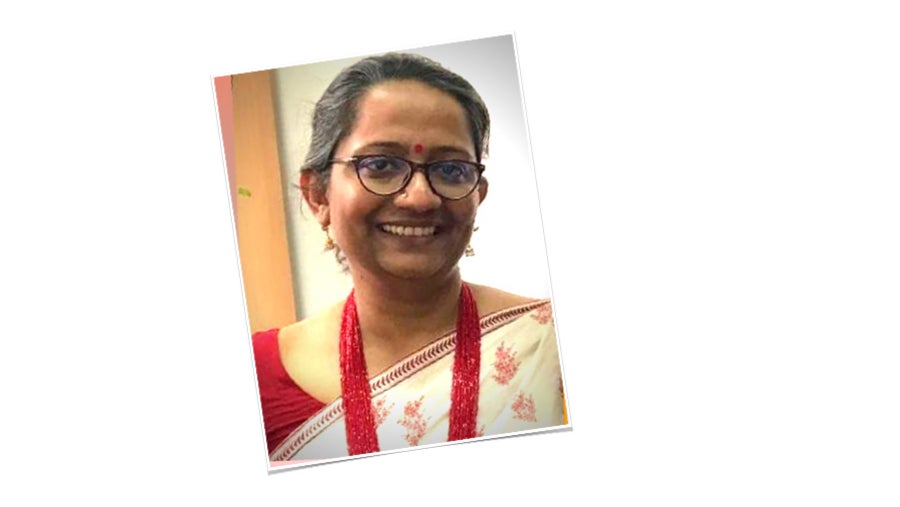
Bangladesh: Rumana Khan is the Gender-Based Violence Sub-Cluster Coordinator with UNFPA in Bangladesh. She works in emergencies in one of the most flood-prone countries in the world and is part of a community of humanitarians who are innovating to anticipate the needs of the most vulnerable and support them during climate disasters. READ MORE
“The intense floods from climate change impact women and girls especially hard. Every year there are all kinds of floods and we have to look at how this affects the lives of the vulnerable or marginalized groups.”
-Rumana Khan
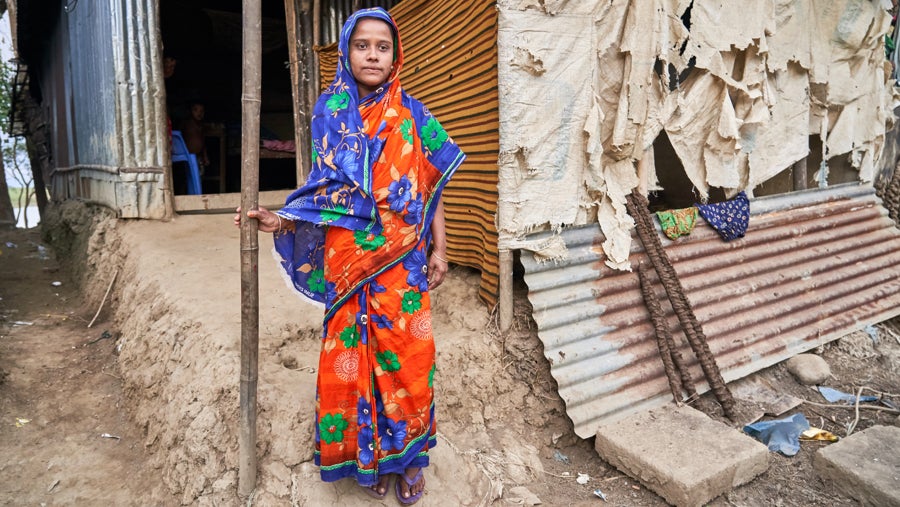
Bangladesh: Kameena Islam blames extreme weather for the death of her infant son, Shahnawaz. When her baby fell ill with a fever, she wrapped him in a plastic sheet and travelled through a torrential downpour to the local hospital in Umedpur in northern Bangladesh. When she arrived over an hour later, she discovered her son had died in her arms. Islam and her family still do not know what caused the child’s death, but they say the extreme weather conditions made it harder to get support and this delay played a part in his death. ©UN0286423/Jhantu Chakma
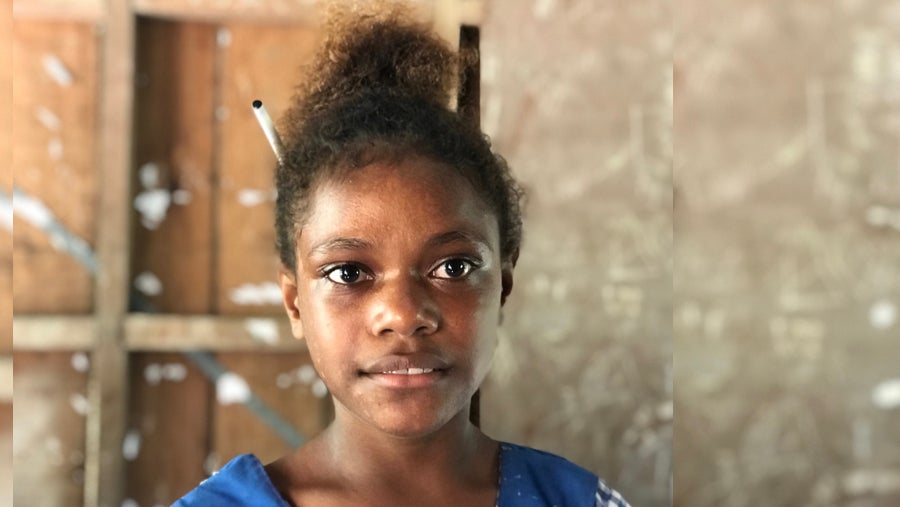
Solomon Islands: Cathy is from the island of Santa Catalina in Makira province. The low-lying atoll is eroding as a result of sea-level rise and the community is facing hard choices trying to feed a growing population with reduced arable land. Her father is a fisherman who goes out to sea in a traditional canoe to catch enough fish for the family. Changing weather patterns have resulted in unpredictable storms that have claimed the lives of many fishermen. Cathy says her father nearly drowned last year when his boat was smashed on a rock in a storm. While he managed to swim to safety and goes fishing every day, Cathy worries when he heads out in rough seas. ©UNFPA/Rose
The climate crisis is projected to double the number of people in need of humanitarian assistance globally by 2050, with devastating impacts projected in Asia and the Pacific as the world’s most disaster prone region
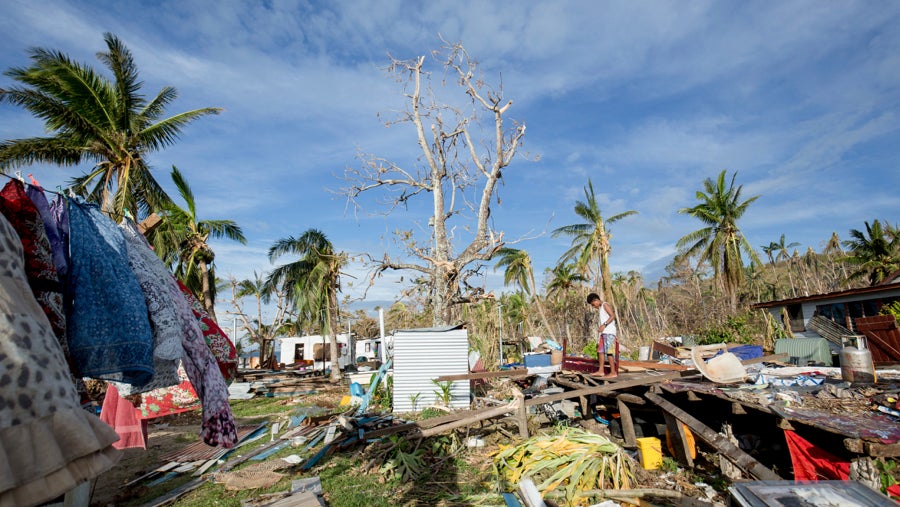
Fiji: Tropical Cyclone Yasa made landfall on 17 December 2020 in Bua province on the island of Vanua Levu. While it weakened as it neared Fiji, it was still a category 5 cyclone with wind speeds of 250 kph when it hit Bua. The Northern Division, which is one of the most impoverished regions in the country, bore the brunt of the cyclone. ©UN0400168/Stehpen
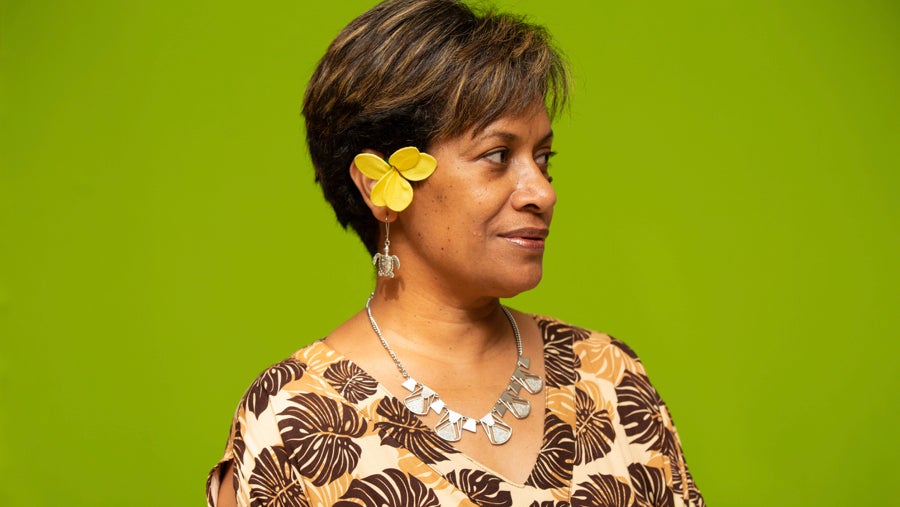
Fiji: Susan Grey is the Executive Director of femLINKpacific, a Pacific feminist media organization that supports a network of rural women in Fiji as communities brace for more extreme storms from climate change. “Some women don't feel comfortable in the evacuation centers,” Susan says. “There is the issue of everyone being stuck together in an evacuation center. Is there proper lighting? Do they have proper restrooms, or do they have to go outside to a separate building?” READ MORE
"We have a climate crisis; we have more severe and frequent disasters and we know that women are increasingly worried about food security. These are all data points that should be raising alarms.”
-Susan Grey, femLINKpacific
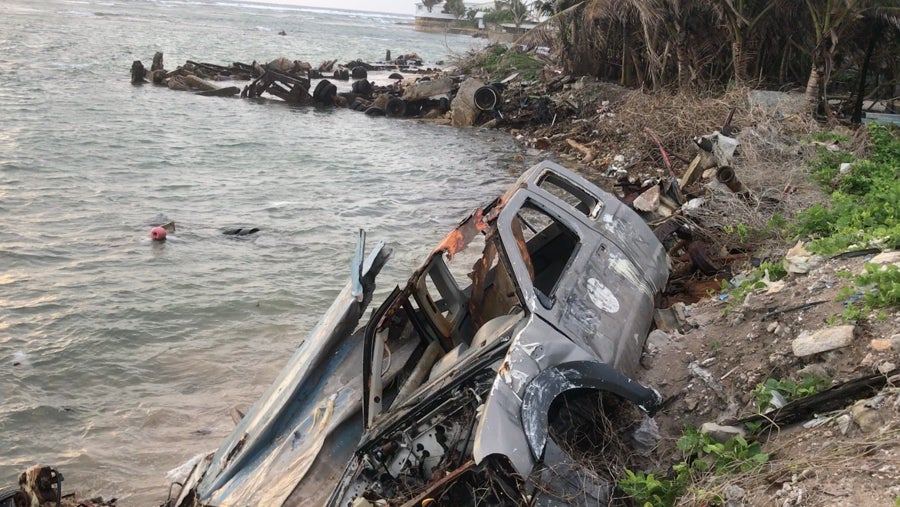
Marshall Islands: Improvised sea wall in the capital of Majuro. ©UNFPA/Rose
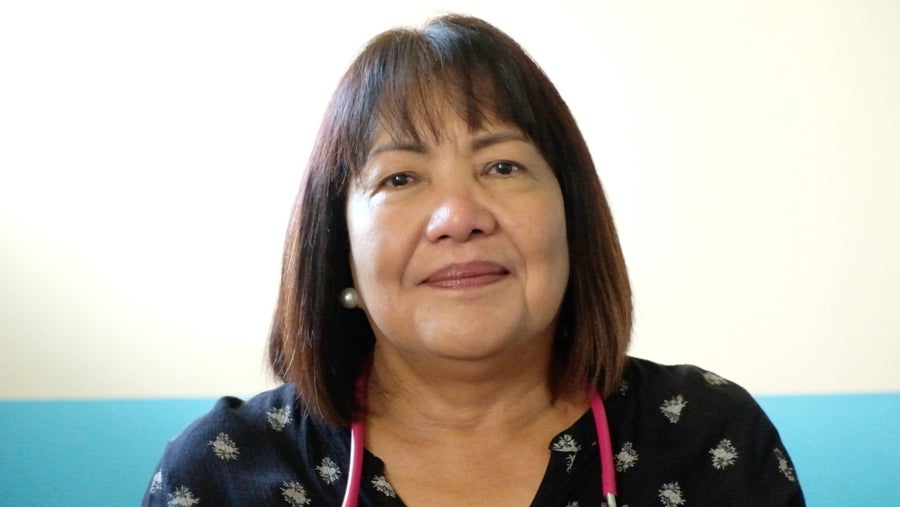
Marshall Islands: “A lot of the young mothers are from the remote outer atolls,” says Dr Mary Jane Gancia. “I try to teach them ways to look after their babies and stay healthy with good nutrition.”
Majuro Hospital is the focal point for antenatal and pediatric care covering hundreds of islands and thousands of square kilometers of ocean. When tenuous transport links between the islands are threatened by extreme weather, entire communities including individual households need to have coping techniques. Dr Gancia teaches mothers breastfeeding tips and healthy life skills.
“Disaster planning starts with that first discussion I have with these moms,” she says. “I ask them about their food sources, the water reserves and how they need to plan to have extra on hand in case of storms.”
“Disaster planning starts with that first discussion I have with these moms. I ask them about their food sources, the water reserves and how they need to plan to have extra on hand in case of storms.”
-Dr Mary Jane Gancia, Marshall Islands
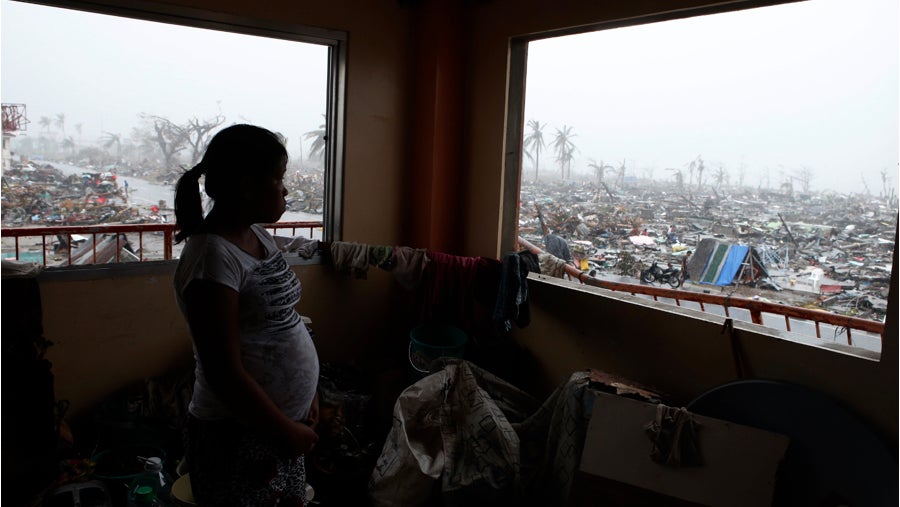
Philippines:A pregnant woman in a temporary shelter looks out at the devastation after Typhoon Haiyan (Yolanda) destroyed her home and her community. ©UNFPA/Philippines
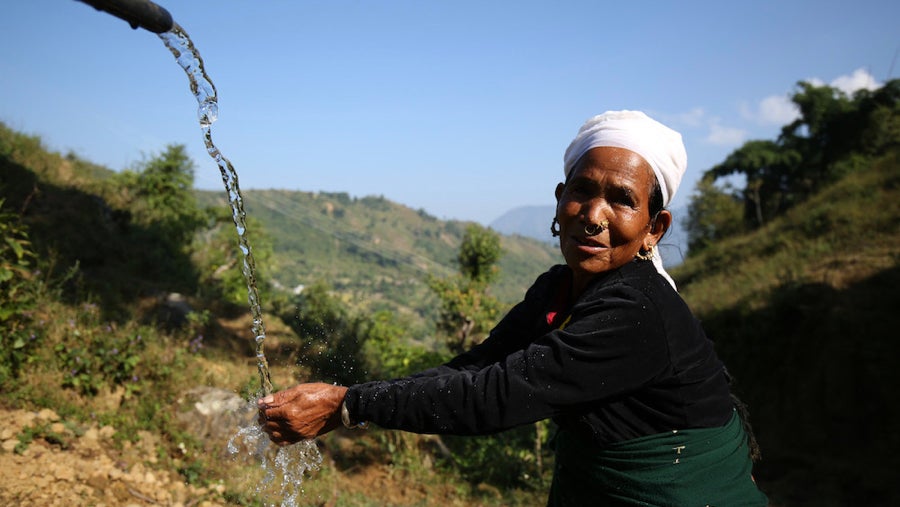
Nepal: With inadequate roads, underfunded health clinics and increasingly extreme weather, women in rural Nepal are vulnerable to the impacts of climate disasters. ©UNDP

Nepal: Manisha Pantha is a Nurse and Training Course Material Specialist in disaster preparedness and emergency response. She leads the Program for Enhancement of Emergency Response in Nepal with the National Society for Earthquake Technology. Manisha is a humanitarian first-responder on a mission to get more women involved in disaster planning so communities can better cope with the impacts of climate change. READ MORE
“There are more challenges added every year because of climate change”
-Manisha Pantha, Nepal
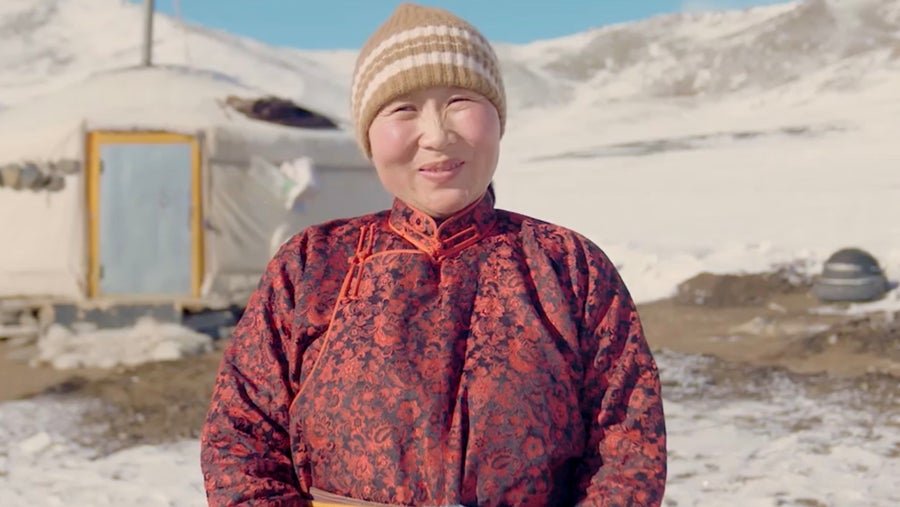
Mongolia: For women in rural Mongolia, the climate crisis will mean more intense winter storms and dangerously flooded rivers that will limit their ability to access essentials like sexual and reproductive health services and supplies. In times of emergency and financial hardships, herder women and girls’ specific needs for safety, security and dignity are not prioritized. UNFPA is working with local and national government partners to increase telehealth services and preposition critical supplies so women get the support they need. To reduce the risks of gender-based violence UNFPA distributes Dignity Kits to address critical sex and gender-specific hygiene needs for herder women of vulnerable groups and girls. ©UNFPA Mongolia
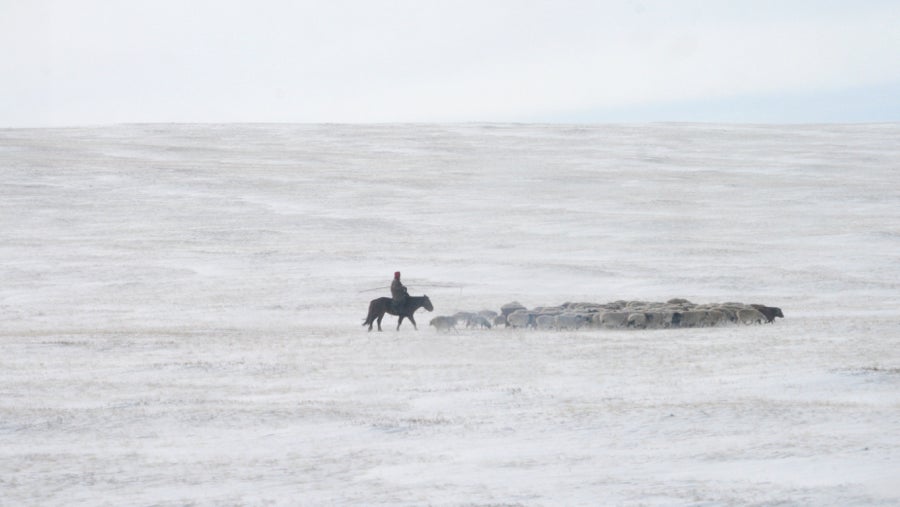
Mongolia: Dzud is the term in Mongolia to describe extreme winter weather conditions leading to a mass death of livestock from lack of food or water. Dzud winters are characterized by harsh cold, too much snow and ice or sometimes not enough snow leading to drought. Mongolia weathered consecutive dzuds around the turn of the century and again during the 2009-2010 winter, all against the backdrop of a devastating drought linked to climate change. The 2009-2010 dzud alone killed 22% of the nation's livestock. Dzuds continue to plague the country even to this day. (source: National Statistical Office of Mongolia) ©UNFPA Mongolia
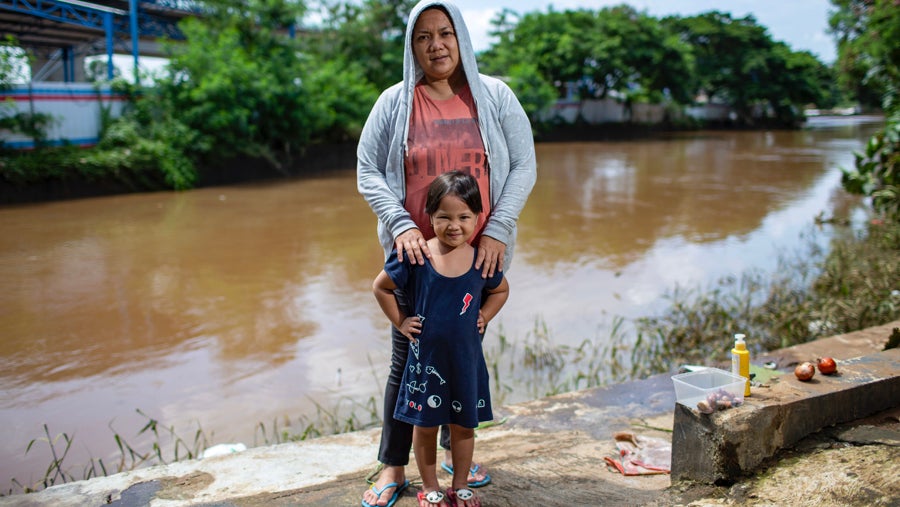
Indonesia: Cello D'jo and her mother Selly stand in front of a river that overflowed and inundated their home in East Jakarta. Hours of heavy rain over the three previous days had caused the river to surge and send floodwaters as high as 1.8 meters (six feet) into their neighborhood, forcing them to flee to the second floor of their home.
In February 2021, Jakarta was hit by severe monsoon floods that forced more than 1,000 residents to evacuate from southern and eastern areas of the city. Many parts of Indonesia are vulnerable to flooding and landslides during the rainy season from November to March. In Jakarta, over development, too much concrete, a lack of green space, and over-extraction of groundwater have also contributed to severe flooding in recent years and made it the world’s fastest-sinking city. With climate change causing more extreme and unpredictable weather patterns, flooding in the city will likely worsen if nothing is done. ©UN0421882/Wildander

Indonesia: Nur Arifina Vivinia (Vivien) is a member of the Women's Global Network for Reproductive Rights. She works with UNFPA Indonesia by coordinating youth engagement in emergencies programmes in a country that is on the front-line of increasingly extreme climate disasters. READ MORE
“Young people are some of the most impacted but they were not being considered in the response”
-Nur Arifina Vivinia
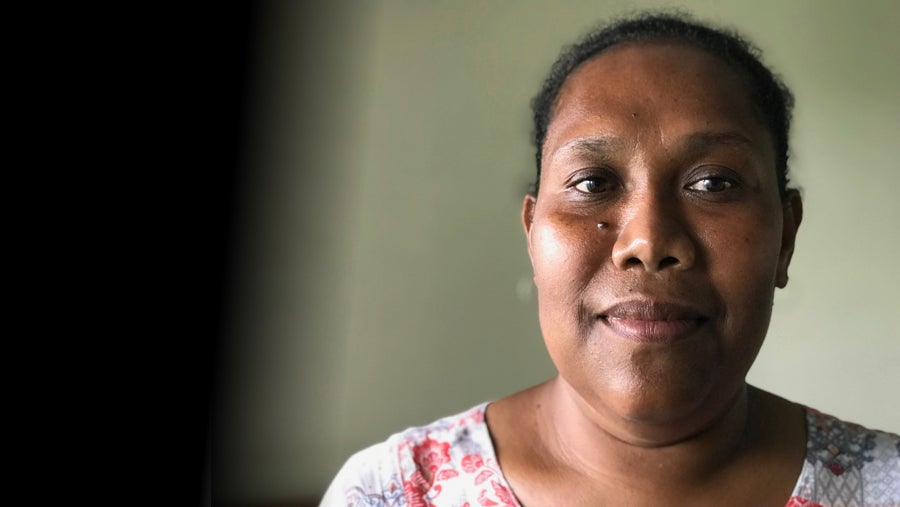
-
Solomon Islands: Joy Papao works with the National Disaster Management Office in the capital of Honiara. She is a humanitarian who has been involved in the response to multiple climate disasters from cyclones to floods and landslides. She uses GIS technology to map the needs of remote communities and creates readiness plans to ensure that responders know where the most vulnerable are and what support they require. UNFPA/Rose
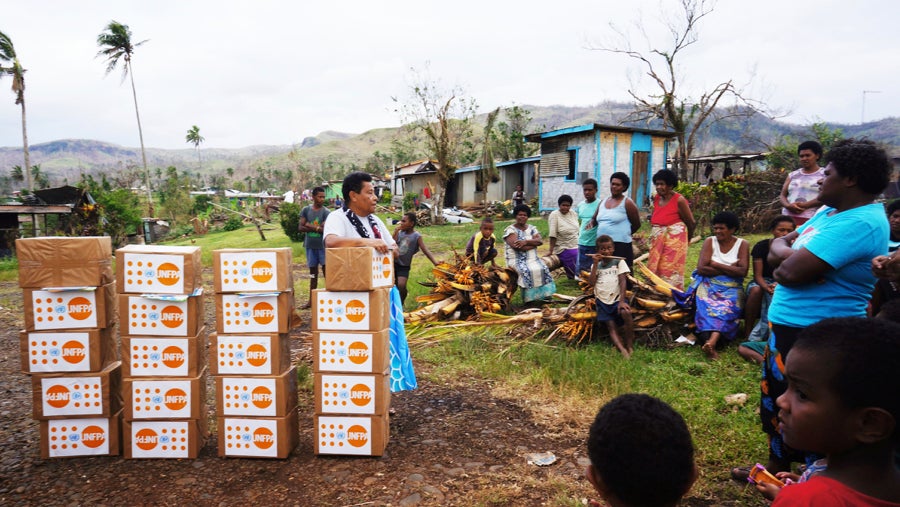
Fiji: Women and children wait for the distribution of dignity kits after Tropical Cyclone Harold devastated their community. The kits are a lifeline for families who have lost their homes, their clothing and basic supplies like sanitary pads and soap.@UNFPA/Pacific

Solomon Islands: Low-lying islands off Malaita are vulnerable to rising sea-levels and extreme storms.@UNFPA/Pacific
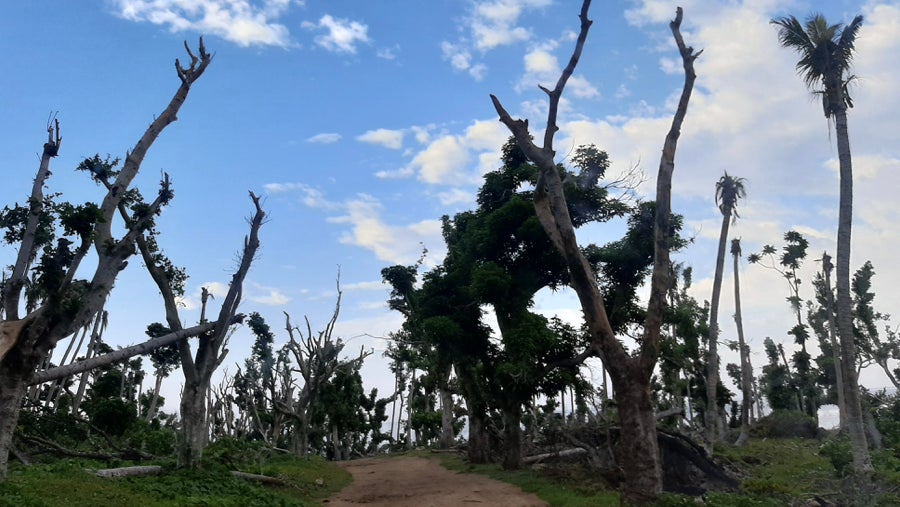
Vanuatu: The once lush forest of Pentecost island was stripped of leaves after Tropical Cyclone Harold struck this island nation in 2020 leaving communities without food sources and shattered infrastructure. UNFPA played a key role in the humanitarian response by delivering dignity kits and essential services for sexual and reproductive health. @UNFPA/Hawkins
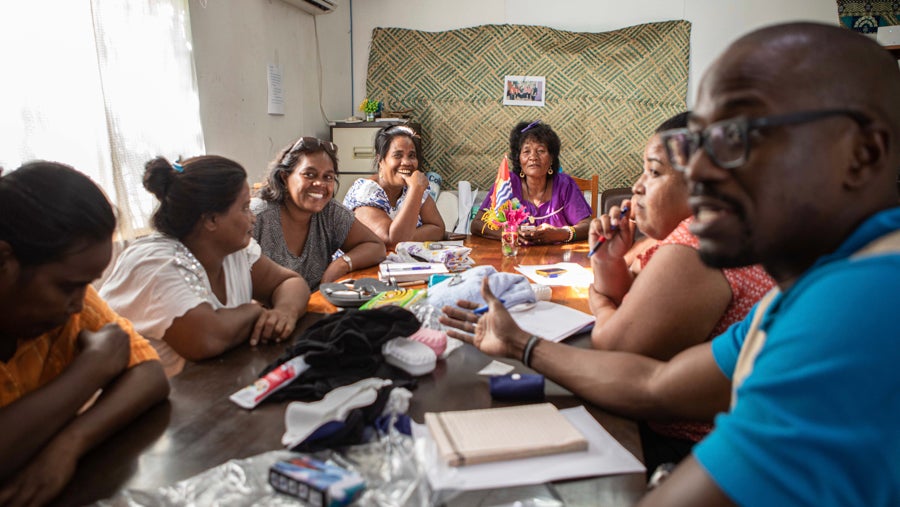
Kiribati: UNFPA's Brian Kironde works closely with Kiribati Women and Children Support Centre to help them in assisting women escaping domestic violence. Violence tends to soar during emergencies, which are becoming more frequent and intense as a result of climate change. @UNFPA/Learson

Kiribati: A girl on her way to school in the capital of Tarawa. Kiribati is one of the countries most affected by sea level rise. During high tide, many villages become inundated making large parts of the villages uninhabitable. ©UN055820/Vlad Sokhin
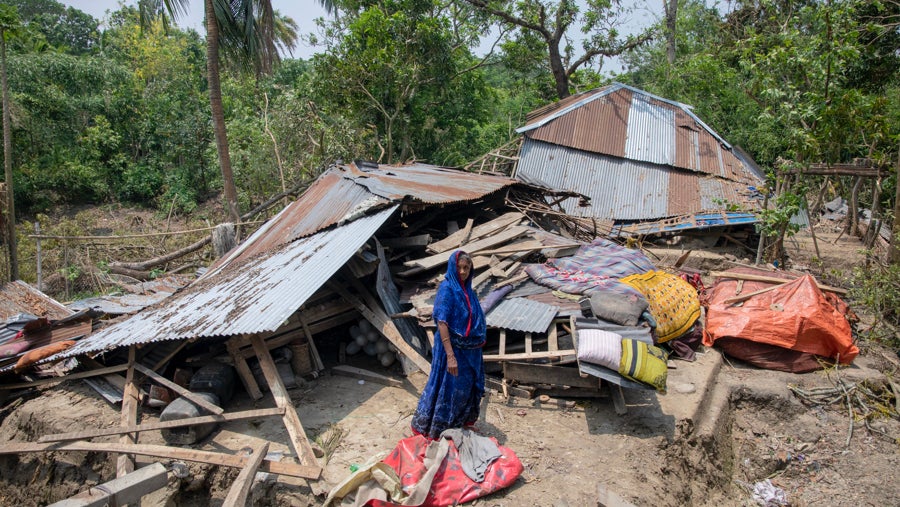
Bangladesh: A woman in front of what remains of her home in Dokhin Koralia in Vola after Cyclone Fani devastated parts of the country in 2019. Almost 1.3 million people had been evacuated to cyclone shelters across the affected areas of western and southern Bangladesh. ©UN0310442/K M Asad
Climate change could push more than 100 million people within developing countries below the poverty line by 2030.
-World Bank

Bangladesh: UNFPA’s Fathema Sultana is a veteran humanitarian working to support women and girls impacted by gender-based violence in Cox's Bazar in Bangladesh. ©UNFPA Bangladesh

Bangladesh: A woman gets advice from a health professional at a clinic in Cox's Bazar. Maintaining sexual and reproductive services in the four refugee camps can be difficult as climate-related disasters like floods often intensify the challenges that humanitarian teams face in supporting vulnerable populations. ©UNFPA Bangladesh

Viet Nam: A girl rides her bicycle past buildings damaged by Typhoon Goni and the subsequent floods in Le Thuy, Quang Binh. Schools, houses and communal infrastructure were badly impacted. With limited access to clean water and sanitation after a destructive typhoon, women and girls often face increased risk of disease and gender-based violence. With their homes severely damaged and their food stocks lost, thousands of people in Quang Binh were moved to evacuation centres, which were themselves flooded, resulting in dangerous health, protection and hygiene conditions for the displaced population. ©UN0355810/Truong Viet Hung
Engaging and empowering women and young people of all backgrounds in climate action is a prerequisite for more just, equitable, sustainable and climate-resilient societies

Viet Nam: Nguyen Thi Nga, 55, holds her 8-month-old grandson. "He is still very young but the parents have to go back to work to make a living," she says. Her house and its furniture were destroyed by a flood that followed a cyclone and she was left with nothing. Nguyen Thi Nga says the supplies they received following the climate-related disaster were critical for her family's survival. ©UN0355646/Truong Viet Hung
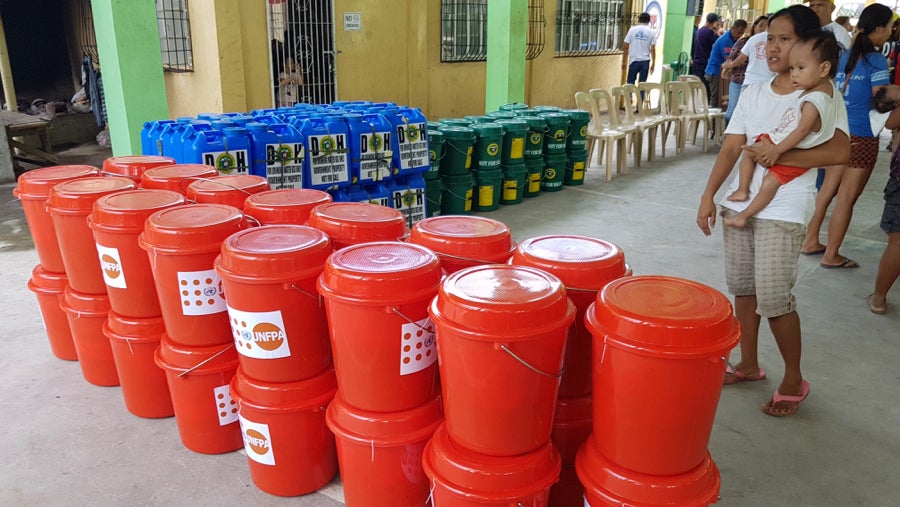
Philippines: UNFPA Dignity kits ready for distribution after a disaster. The kits contain essential health and hygiene supplies for women and girls, including sanitary pads, clothing, a torch and a whistle to signal possible danger. ©UNFPA/Philippines
Learn more
Minimum Standards for Prevention and Response to Gender-based Violence in Emergencies

